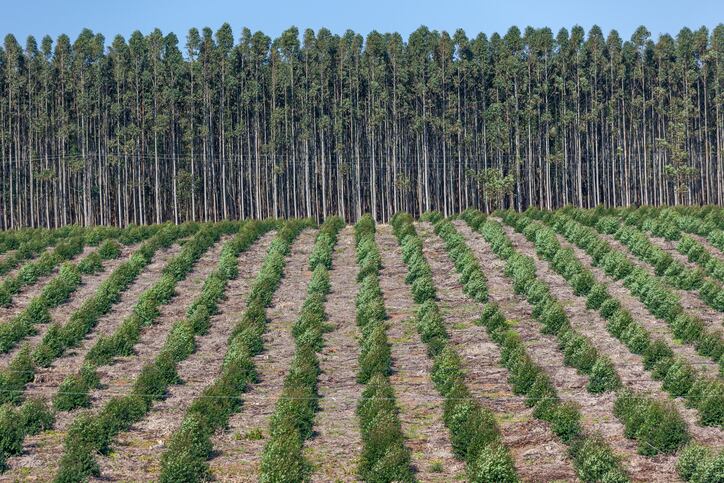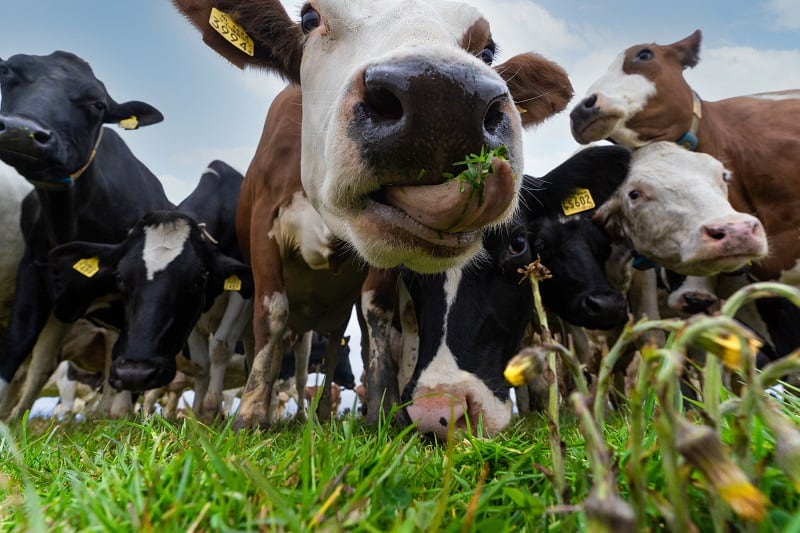The investments, announced yesterday, also could change the power balance between long-standing industry leaders that currently dominate the US food industry and small- and mid-size players angling for more market share by shifting government support and focus from centralized production to more regional processing and distribution.
At Georgetown University yesterday, Secretary of Agriculture Tom Vilsack argued that revamping the US food system is essential to the long-term health of the nation as the US navigates “changing climate, a global pandemic, and an unprovoked and brutal war, all of which manifest itself in supply chain disruptions, inflation, unprecedented natural disasters, growing global food insecurity and continued pandemic related hospitalizations and deaths.”
He added: “A transformed food system is part of how we as a country become more resilient and competitive in the face of these big and future challenges and threats.”
He explained that a more regional food system would allow for more sustainable agricultural production that could reduce the industry’s footprint but not its yield, offer a “better deal” to farmers, ranchers, growers and consumers by creating “new and better markets” that could stimulate the rural economy and bolster Americans’ health outcomes by improving access to healthy, locally grown foods.
To achieve these ambitious goals, the Vilsack announced yesterday that USDA will invest heavily in new production, processing, aggregation and distribution and markets and consumer access to food.
Facilitating organic and urban farming
Among these investments is up to $300m over the next two to three years in a new Organic Transition Initiative that will make it easier and less expensive for farmers to adopt organic practices and become USDA organic certified.
“These resources will be used to create a mentoring program where organic beginners can be paired with experienced organic farmers who can provide guidance on how best to navigate and simplify the transition process” and to offset “the initial cost of conservation compliance, to meet the organic standards and to help expand and develop markets across the United States,” Vilsack said.
He added that this program “will hasten the day” when the US food system can operate at net zero emissions while also creating high value opportunities for farmers, ranchers and growers.
USDA also will invest up to $75m in additional funding to support urban agriculture and the disbursement of previously earmarked funds under the Agriculture Improvement Act of 2018, which so far has funded only 6% of applications, Vilsack added.
Infrastructure support from cold storage to workforce development
Recalling the destruction of much-needed food during the pandemic because there was insufficient access to processing and storage, USDA also is dedicating up to $600m in additional financial assistance to support supply chain infrastructure for non-meat and poultry processing.
The grants, low-interest loans and loan guarantees will go to independently owned and available infrastructure, such as cold-storage, refrigerated trucks and processing facilities, which Vilsack said will increase competition in all sectors to the benefit of both producers and consumers.
Noting increased capacity will require a larger workforce, Vilsack added that USDA will make $40 million available to work with land grant universities, community colleges and minority serving institutions to support workforce development, starting with the meat and poultry industry.
“This is a first step in an effort to rebuild the workforce for agriculture,” he added, hinting at additional initiatives that will be announced “in the very near future” that will further support workforce development.
Increasing access to nutritious food
Producing more food that is healthy for people and the planet is only the first part of USDA’s master plan in revamping the food system – it also wants to ensure healthier food is more accessible.
With this in mind, Vilsack said that USDA earmark $155m in additional funding for the Healthy Food Financing Initiative, which gives grants and loans to improve distribution of healthy food in underserved areas.
The department also will increase the “very popular and well used Farm to School program with an additional $60m investment to encourage more local and regional purchase of wholesome foods used in our school meals,” said Vilsack.
USDA will further reinforce school nutrition by investing $100m in a new Healthy Food Incentive Fund designed to invest in partnerships between the food industry and schools to encourage innovation around meals, he added.
In addition, USDA will direct an additional $50m to the Senior Farmers Market Nutrition program that expands seniors’ access to locally grown produce, $40m to the GusNIP Produce Prescription Program, and $25m to support the Supplemental Nutrition Assistance Program’s electronic benefit transfer technology.
Industry support
The Natural Resources Defense Council lauded the additional funding as a way to improve access to healthy food produced with climate-friendly practices and urged the spirit of the program be infused in the upcoming Farm Bill and broader national food policies.
“These investments take a bold step towards leveling the playing field for communities that have been burdened and endangered by our food system and have not seen a fair share of its benefits. By building on well-used programs with a focus on equity, USDA’s framework will help all communities get healthy food on the table while benefiting from a safer environment,” NRDC’s national policy director and senior attorney Valerie Baron said in a statement.
Vilsack echoed this sentiment in his speech, encouraging legislators to further the transformation of the food system through the next Farm Bill so that more Americans have access to safe, healthy, nutritious and affordable food and there are more opportunities for industry players, particularly small and mid-sized or underserved producers that can serve as a backbone for revitalizing local economies.




